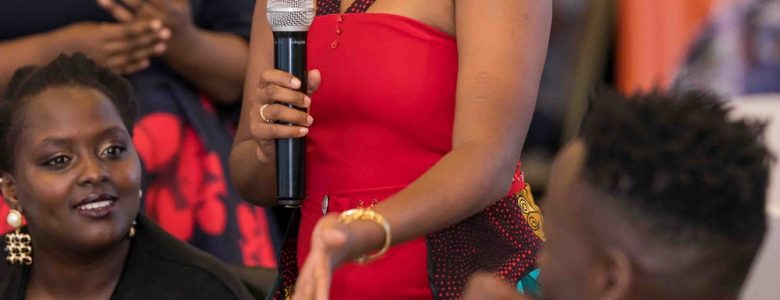Tumaini Team SIP Delivery to Nairobi County Government
SAYDS MEDIA
November 16, 2022
SAYDS MEDIA,SIP

We desire that SIT will complement the quantitative policy briefs that both governmental and non-governmental organizations create to ensure that the policies formulated and implemented to address social problems also consider the systemic insights from communities and the empirical data from research findings
The impact of poverty on education in East Africa remains one of the biggest challenges, combined with substantial structural issues such as the deficiency of employment opportunities for school and university graduates. That is one of the reasons why we focus on improving the quality of education through skill-building.
According to Habitat for Humanity, Despite progress over the last decade, 67 million children worldwide, of whom approximately 53% are girls, do not have access to primary education. The Education Commission projects that if current trends continue, by 2030, 4 out of 10 children of school age (1.4 billion children) in low- and middle-income countries will be on track to gain basic secondary-level skills.
The Tumaini SCA Team was motivated to understand the reason behind the poor outcome of the education systems among youths in Makadara Sub-County using complexity and systems thinking. Tumaini team has been formed by youth equipped with systems thinking from System Acumen for Youth Development Solutions (SAYDS). Systems thinking skills are effective in helping to design solutions to complex social problems faced within various communities.

Introduction
Kenya has allocated a significant part of its budget to the education sector to enable reforms like the Competency-Based Curriculum and 100 percent transition from primary to secondary school. However, problems like poor quality teaching and significant teacher-to-student ratios affect the quality of learning among students. According to documented data, the pupil-to-teacher ratio is considered high in some counties like Turkana, recording 77; 1.
Before the COVID-19 pandemic, primary school education student enrollment stood at 93% and 53% at secondary schools. It is worth noting that Kenya has made strides in remote areas and marginalized communities at pre-primary and primary levels. Dropout of learners is still high among pastoral communities because of less value attached to education, early marriages, and long distances to learning centers. After the COVID -19 pandemic, 17 million learners missed school, facing other threats like child labor and deteriorating mental wellbeing, as UNICEF reports indicate. The youth in Makadara face the problem of abject poverty with high levels of illiteracy. Most youths in the region languish in poverty because of inadequate technical, life skills, and digital skills. These challenges have become increasingly complex. Despite studying and completing high school, youth still have enough of the relevant skills to create small, yet meaningful, opportunities for themselves, where possible in this complex economy. In Kenya, student performance has been traditionally measured using grades or scores on assessments that have emphasized retention over application and innovation. This has led to the emergence of many youths who graduate without the right dose of a skillset to thrive in an economy exposed to global labor forces, creating an obstacle for the coming generation.
Approaches Used
The SCA Tumaini Team comprises seven members who went through the Systems for Acumen for Youth-Led Development Solutions(SAYDS) Fellowship program.
For one year, members of the Makadara team have been learning complex thinking from SAYDs and using the knowledge to relate to the complex social problem we are interested in.
They conducted four community forums and consultations in the Makadara sub-county to help us understand the critical framings, stakeholder analysis, informal policy rules, and boundary critique. This was also to help us gather factual information from the community members to show that the problem exists.
Complexity Analysis Toolkit
This toolkit helped the team members understand what a complex system is, identify components in the system, how these components interact with each other, and how they are interconnected. Understanding the complex nature of social problems is crucial to creating effective, lasting solutions. This toolkit allowed the team to appreciate the complex system responsible for increasing and persisting poor education outcomes.
Systemic Intervention Toolkit
This helped the team to understand the perspectives of all relevant stakeholders in the system, understand how to create boundaries of the system (morally identify factors to include and factors to exclude), the changes in the interactions in the system, and how to design a holistic intervention. The identified stakeholders have been expounded on in the next segment of this document.
Complexity and Public Policy Guide
The guide is used as a tool to familiarise the youth with the processes and formalities involved in policy formulation while linking them with external stakeholders at every level who better elevate their understanding and enable them to engage, facilitate and participate in the development of policy proposals informed by both their complex analysis of the complex social problem of focus and the systemic solution designed using SIT.
This document is one of the critical outputs of the policy and advocacy training that we went through. We desire that it will complement future quantitative policy briefs that both governmental and non-governmental organizations create to ensure that the policies formulated and implemented to address social problems also consider the systemic insights from communities and the empirical data from research findings.
Additionally, they hope that the insights provided by the document will provide a helpful perspective that ensures policies lead to lasting solutions. Using systems thinking, the team has identified stakeholders, their roles and responsibilities, and how they interact and interconnect to understand the problem. It is vital to know that the social problem of lack of quality education in the region is complex because it is unpredictable. It is, therefore, essential to coming up with a solution that would not alter the project's purpose.
Key Findings
The key lesson learned is that people must have many perspectives on a problem during the policymaking process before deciding which policy proposals to create. It is impossible to include everyone, but we still have to accept that there are consequences of excluding other stakeholders during the policymaking process. There should be ways to accommodate those whose views are excluded or marginalized in the policymaking process.
Because stakeholders have different perspectives on a challenge, they have a way of explaining a situation from various angles. . Some of the key framings identified include:
- Most youths in Makadara lack skill-centric education; hence are jobless and live the kind of life they live in the slum area. Many are engaged in short-term, low-paying jobs that don’t meet their daily expenses.
- Even with the required education, one needs a God-Father to land a well-paying job
We found that there are interventions or courses of action that are already being carried out by the stakeholders based on the different ways that they frame the problem, namely:
- Development of vocational training institution in Makadara for
- Development and support of learners’ fees through bursaries and loans
Key insights from the research findings are;
- Policy-makers need to accommodate the perspectives and frames of crucial stakeholders before deciding which policy proposals to create. When mapping stakeholders, it is vital to conduct stakeholder analysis and categorize them according to their identities and beliefs/Culture to know them better.
- The ministries for Youth at the national level and youth departments for Nairobi County can work together to create a network of key stakeholders dealing with youth. This can create a multi-sectoral and trans-disciplinary working model to address the evolving needs of Youth within the county. As a result, this will show the strengths and weaknesses of stakeholders.
- In policy, the stakeholder consultation process must be participatory and representative with a boundary critique in mind. Gathering and continuously updating them brings a more informed discernment of the approaches needed.
- The relevant government arms need to inform youths on career dynamics and ensure that professional education is provided in the tertiary institutions to ensure the competitiveness of their skills within the economy. Youth unemployment linked with inadequate access to skill-centric training are leading problem facing youths in Makadara Sub County.
- Agenda-setting for policy becomes effective after stakeholder analysis, and well-structured knowledge of the network structure of the stakeholders’ interactions and interconnections is developed.
The coalition of societies in Makadara set the agenda on the youth’s complex problems by framing problems appropriately amid other competing needs. The lobbying for the county government depends on informed voices.
Parting shot
County governments can analyze the state of vocational training education curriculums if they are well-informed market-oriented courses to improve employability and cognitive gains for Nairobi County youths. We are confident that you can lead towards creating such policies that empower, collaborate, and encourage public-private partnerships in this regard.
Recent Post
How delivering Systemic Insights For Policy and doing mobilization workshops Impacted our work in the community
November 16, 2022
Why listening to community members can lead to systems changeNovember 16, 2022
Tumaini Team SIP Delivery to Nairobi County GovernmentVolunteer
You will be placed in the appropriate team or project depending on your skills and experience. Please reach out if you can assist us in any of the following fields:








